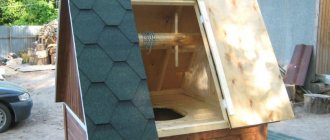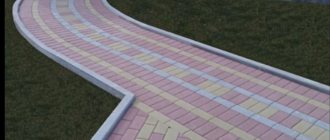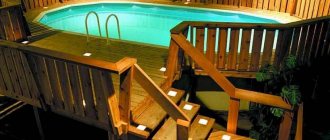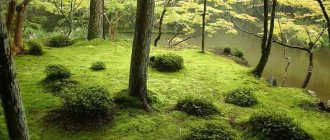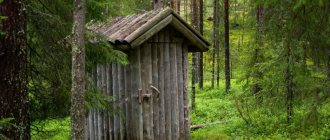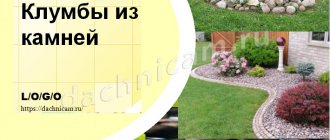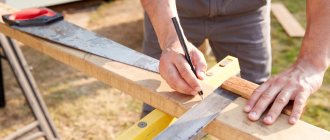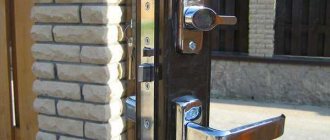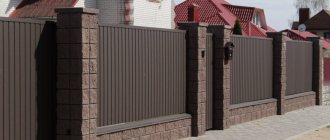Borders add completeness to the flowerbed.
When designing such mini-fences for a flower garden, it is important to determine the style in which they will be installed. Border fences must match the design of the garden plot. In modern flower beds, borders take on a variety of shapes due to the materials used. Today you can find stone, brick, wooden, metal, and plastic borders in dachas. Each material has its own advantages and methods of construction.
Why do you need a border?
The border, contrary to popular belief, has not only an aesthetic function. Its purpose can be much broader:
- it serves as a limiter that does not allow plants planted in a flowerbed to grow beyond its boundaries;
- unites disparate areas with plants into a single ensemble;
- emphasizes style;
- gives the plantings a neat and well-groomed appearance;
- protects planted flowers from accidental trampling;
- divides the site into zones;
- protects plantings from domestic animals.
The purposes for which the border is selected will determine its size and material of manufacture. If the level of the flower bed is higher than the rest of the lawn, then a properly selected border fence will help prevent the soil from being washed away by rain and watering.
The border may look like a small fence made of semicircular wooden blocks Source bv-doski-vyborg.com
For plants that tend to grow, you need to choose not only an attractive border, but also one that is installed in depth. Such an installation will serve as an obstacle to the roots and will prevent the flowers from going beyond the boundaries of the designated area.
Natural or artificial materials are used as border materials. Sometimes it’s a combination of both.
Selecting curb height
The height of the border depends on the height of the plants being grown. It should not cover all the beauty of the flowers. But the functional requirements for the fence must be taken into account.
For large flowers, shrubs and trees, you can install a fence up to 0.5 meters in height. Approximately the same height, from 40 cm, will be needed to protect plantings from animals and small children. If the plants are planted very small, then you can limit yourself to a symbolic, flat-shaped border that will not hide all the beauty of the plantings.
For a flower bed with short plants, a high border is not needed, but if necessary, it can also raise the level of the flower bed. Source stamfordgardenclub.org
Very often, several flower beds are laid out on the site. In order for them to look like a single ensemble, it is necessary to select borders of the same shape and color. Therefore, it is recommended to select and order borders for all flower beds at once.
In the case where the border also serves as a limiter for garden paths, its height should be at least 10 cm. This size of the limiter will prevent accidental trampling of plantings.
Traditionally, for a purely visual limitation of the flower bed, a border about 6 cm high is used. A wide selection of materials and shapes allows you to choose the most suitable option. Let's look at each of them.
See also: Contacts of construction companies that offer turnkey landscaping work of any complexity.
Slate and corrugated board
Concluding the topic of construction residues, let’s remember roofing materials and metal sheets. If you have tiles or slates lying around, simply dig these fragments into the ground to the desired depth. It is better to additionally strengthen high slate borders for flower beds from the outside.
Unused corrugated sheeting after erecting a fence on the site can be cut into pieces and also dug into the soil along the border of the flower bed. And if you need to make high flower beds, it is better to strengthen the borders, for example, with a wire frame.
Metal: Durable
Metal borders are especially suitable as fencing for areas where there are forged elements in the design of the house and surrounding area. This could be elegant wrought iron bars on windows, lanterns, railings on stairs or an external fence.
Openwork metal patterns will not serve as an obstacle to viewing all the beauty of the flower garden. The metal structures themselves, despite their apparent elegance, are quite heavy.
A low metal fence made by casting can have different shapes Source actionquarterly.com
There are the following types of fences:
- welded;
- cast;
- forged.
Welded fences differ from cast and forged ones in simpler shapes. Graceful, equipped with curved elements and ornaments, fences are made by forging and casting. Such structures can serve as a basis for climbing plants. In addition to the fences, you can install metal arches for wickerwork in the same style.
On a note! The metal must be pre-treated with anti-corrosion substances.
DIY fencing for flower beds
Borders for flower beds and garden paths are often made independently to suit the design style of the site. You will need to take measurements of the flower beds, determine the material suitable for fencing, color scheme and dimensions. Experts recommend creating a sketch and drawing for the decoration element. Depending on the material used, you will need tools (hammer, pliers, screwdriver) and fasteners (self-tapping screws, screws, staples, ropes). After completion of the work, it is necessary to check the symmetry of the structure with a building level.
Ideas for arranging borders for garden paths and flower beds
Making structures for fencing flower beds is possible using improvised materials. Original ideas for preparing borders from tires, ceramic mosaics, ropes, creating a wicker fence from willow branches, bamboo. The work uses glass bottles, ceramic plates, and old CDs. A low hedge can be formed. It is important to take into account the coincidence of the design with the style direction of the site.
Wicker border
A budget-friendly and original way to decorate borders is weaving from twigs. To create a composition, you also need thin pegs and cuts of wood to form a support. The building material is susceptible to moisture, so it must be treated with antiseptic compounds. Pegs are driven into the ground around the perimeter of the flowerbed. Willow branches are braided around the supports on the inside and outside, giving the border a basket shape. After 3-4 rows, the rods are tapped with a hammer to compact the structure. If necessary, the bark is removed from the branches, and the material is treated with moisture-resistant impregnation. For large compositions, weaving is carried out in sections, which are connected using nails. The service life of the structure is 3-4 years depending on the climatic conditions of the area.
Fencing made of wooden blocks
An original fence for a garden plot decorated in rustic or country style can be a border made of chocks. For the work you will need wooden logs sawn into cylinders. The thickness and height of the chocks are calculated in accordance with the dimensions of the flower bed or lawn. The height is 15-50 cm. The building material is dug into the ground for the stability of the structure. The cylinders must be tightly connected. To create a complex composition, the height of the pegs can be varied according to a given composition or in a chaotic order. The raw materials are treated with antiseptic compounds (impregnation, primer). Then the logs are covered with stain and colorless varnish.
driftwood border
Driftwood is used to create complex compositional solutions. The design is optimal for areas with installed wooden benches, carved sculptures, and trim on the windows of the house. The driftwood must be cleared of bark and treated with antiseptic impregnation. Materials are placed around the perimeter, then plants or shrubs are planted.
Working with stone
The stones are universal for decorating a site, the material is durable, does not require additional processing, and is budget-friendly. When using multi-format blocks, large stones are laid out first, then small elements are fixed on a concrete pad. Flower beds can be decorated with flat stones, or bricks can be included in the composition to decorate the area in a rustic or country style. A new design solution is to create a composition of luminous stones with a luminescent coating.
Wood: environmentally friendly
Wood is an environmentally friendly material that is often used to decorate a site. Wooden fencing is beautiful and fits well with many styles. On sunny days, such a fence will not overheat, will still be pleasant to the touch, and will not cause burns to plants.
Among the disadvantages of the material, one can note its susceptibility to weather changes. In addition, the tree can dry out, rot and crack. To avoid this, the wood needs to be specially treated.
Decorative borders for flower beds made of wood can be of different heights and shapes. If desired, it can be painted in any color or processed to emphasize the natural attractiveness of the wood texture.
Wooden blocks of different sizes will help you make a stepped flower bed Source brat-msk.com
The eco-style design of the site and the house is well complemented by the following types of wooden fencing:
- fence;
- vine with tree;
- mosaic based on cross-cut;
- palisade and more.
A decorative wooden garden border with hemp looks like a lightweight version of the structure. It does not hide the beauty of plants and goes well with eco-friendly styles.
Tiles and mosaics
The blocks can be additionally decorated with mosaics. To do this, they are covered with mortar, shards of tiles or pieces of colored glass are pressed into it and wait for it to harden.
Or you can simply lay out the border for the flower bed with interesting tiles, purchased specifically for this purpose or left over after renovation.
Plastic: a democratic option
One of the most budget-friendly options for fencing structures is plastic. It is not as presentable as metal or stone, but can serve as an alternative to them on a limited budget.
Plastic has its advantages:
- wide range of colors and shapes;
- reasonable price;
- ease of installation;
- resistance to changes in temperature and humidity.
Easy installation makes it easy to dismantle the fence and move it to another location. A large number of design options will help you choose the one you need, for example, imitating natural wood or natural stone. Such a fence will look neat and modern.
The plastic tape for the border has the external shape of blocks Source idei-landshafta.ru
Plastic garden borders for flower beds are divided into 2 types:
- A flexible plastic tape that will allow you to fence off an area of any shape, even a very complex one. These can be separate sections or a continuous roll, which is convenient for fencing, for example, a long garden path.
- Separately produced sections that are installed along the perimeter of the site.
Tape plastic borders for flower beds are a flexible plastic sheet rolled into a roll. It can have a smooth monochrome or textured surface.
During installation, it is buried in such a way that the flowers do not spread to neighboring areas. Often this option is suitable for fencing uneven garden paths.
Advice! A ribbon fence can be emphasized with pebbles or decorative stones sprinkled on the outside.
Preparing for work
In order to lay a concrete curb well with your own hands, you should prepare a set of tools and the necessary materials in advance. At the preparatory stage of work, the area where installation work will be carried out is cleaned.
To do this, remove the top layer of soil and move it to another place. The thickness of the ball is approximately 50-100 mm. The layer must be removed carefully so as not to damage the base soil.
To ensure high-quality installation of a garden border, you will need the following tools:
- shovels and bayonet shovels for trench preparation;
- building level;
- trowel for leveling the mixture and sealing joints;
- pegs, cord or rope;
- concrete mixer or container for mixing the solution (you can use an old bathtub or trough);
- rubber hammer for adjusting the location of the curb;
- Tamping is automatic or mechanical.
Pressed materials: reliability
A solid and reliable decorative border can be made from stones of various types. It could be:
- imitation of natural stone;
- "brick";
- pavement tiles.
Pressed shaped concrete slabs are inexpensive, and their advantage is that they can be of different shapes Source vkupon.ru
Slab fencing is convenient to use on uneven planes with different ground heights. The stone allows you to make a border of any height: from a purely symbolic fence in one row to several rows. Installation of such a structure is usually carried out taking into account all the features of the structure and using a solution that holds the elements together.
Border stone for flower beds has the following advantages:
- attractive appearance;
- strength;
- drainage;
- soil retention.
How to put on sand
If the soils are not prone to heaving, you can do without concrete. Only curbs can be placed in this way - a border for pedestrian paths or a fence for a flower bed or flower garden. With all this, this installation method does not guarantee that the track will not be destroyed. The installation technology is similar to that described above to the place where the concrete solution needs to be laid.
Installation diagram of a curb with a gutter
Only crushed stone is placed under the curb and compacted well. The thickness of the layer must be at least 15 cm. After the curb stone has been inserted at a level, the gap between the sides of the stone and the walls of the trench is filled with the same crushed stone and compacted well. With this installation method, you can collapse the fence even if you step on it at an awkward angle. But as a temporary option - for several months - this installation method is suitable.
Large flowerpots: an alternative option for planting flowers
In addition to traditionally planting flower beds, other methods of planting plants can be used. Ready-made flowerpots are fairly large containers designed for growing flowers.
To arrange a beautiful flower garden, you can use flowerpots in the form of a bowl on a leg Source yandex.ru
At its core, this is no longer a fencing structure, but a full-fledged flowerbed with filled soil. Such flowerpots can be moved from place to place, installed on hills, and combined with traditional flower beds.
Composition from driftwood
Wood in any form in flower beds looks both natural and impressive. Even when these are untreated stumps or snags.
It’s easy and simple to adapt driftwood to a flower garden. First, a fence is created, and then only the plants are planted in the prepared soil. Driftwood, crooked trunks, and thick branches are laid out along the perimeter. Before laying, they are cleared of bark and treated with an antiseptic. The driftwood must be laid so that the soil does not wash out during rain.
